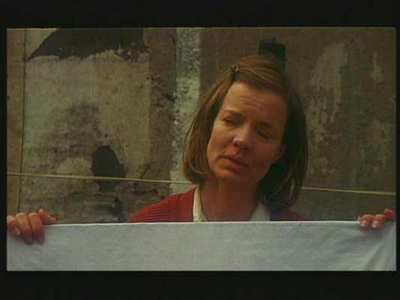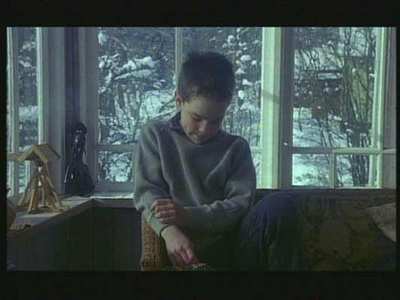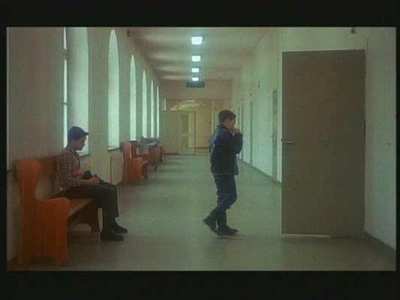Review of My Life as a Dog
Introduction
Laika, the first animal ever sent to space, rode to orbit in Sputnik II on the 3rd of November, 1957. Of course, there was no way to get her back so she starved to death up there in the heavens. In the context of poor Laika’s plight, your own small wories and problems pale into insignificance. Especially, if you are a twelve year old boy called Ingemar in Sweden at the end of the 1950s.
Ingemar has a dying mother, a thoroughly rotten (in his perception anyway) older brother who constantly torments him and a batch of school acquaintances who constantly mock and disrespect. Dying mother aside (which is genuinely tragic), Ingemar is basically going through that phases of alienation, persecution, confusion and general awkwardness that so often occurs just on the cusp of adolescence. To cope with feeling miserable, Ingemar compares his lot to that of those much worse off (“You’ve always got to compare”) such as Laika, train wreck victims, etc.
As his mother’s condition worsens, he is sent to stay with his Uncle over the summer. His Aunt and Uncle are genuinely glad to have him and show him the love, affection and companionship that his mother is unable to. He also makes friends among the children of the area who have no trouble accepting him into their circle. Ingemar also builds easy relationships with many of the village’s adults (including the buxom Betit who takes him with her when she models for the town sculptor – “to make sure it is artistic”). Basically, Ingemar has the time of his life and even develops a typically confused relationship with the village tomboy, Saga, whose developing breasts are affecting her ability to pass for a boy on the school football team (she happens to be their best player). But, the summer ends and Ingemar has to return to his mother. Of course, tragedy awaits.

Video
The film is presented in 4:3 aspect ratio with some “slight letterboxing” as it says on the cover. In general, the image isn’t of particularly good quality largely because of the grain that is evident throughout. This is a shame because the cinematography is rather good. There are some striking imagery, like a train racing across the screen while Ingemar and friend huddle in a nook under the rail, and of the Swedish countryside in general. Good use is made of lighting creating a late summer/autumnal feel.
It looks good but a good transfer would have made the DVD a much better proposition. As it stands, the image quality is better than VHS but the difference is fairly small.

Audio
The soundtrack is pretty basis. Presented in straight Stereo, there is little to suggest any real care was given to the soundtrack whilst the film was being made. It exists solely to carry the dialogue (which is, of course, in Swedish) and I suppose it does that fine. However, there is little ambience in the soundtrack to suggest place. Also, the score by Bjorn Isfalt is dull and twee.

Features
None at all. Actually, it’s almost less than none. On the (static) menu there is a “Credits” option. This sets up an expectation of something, even if it is a simple text page. Instead, all that happens is that you are taken to the credits at the end of the film. Hmmm, interesting.

Conclusion
Lasse Hallström is now best known for sentimental adaptations of The Cider House Rules and Chocolat, however in the early 80s he was making fairly run of the mill romantic comedies in his native Sweden. Then he made “My Life as a Dog”. This was one of the most feted (and generally well liked) art house films of the 80s and allowed him to make the leap to Hollywood. In Hollywood, he has never made a bad film but, by the same token, he has never made a film as exceptional as this.
It is a bittersweet, affectionate look at one boy’s coming of age. The focus is resolutely on the boy’s point of view and is both uncompromising and unpatronising. As such, it is one of the most genuinely touching films films of its ilk. Significant credit for this must, of course, go to writer/director Hallström. However, much of the films power and attraction lies in the performance of Anton Glanzelius as Ingemar. He is tender, mischievous, headstrong, unruly. And vulnerable; always vulnerable.
His interaction with his Uncle is typical of child/adult relationships and Anton’s body language speaks volumes. Likewise his (non-sexually) besotted relationship with the lovely Betit is equally authentic. However, the core of the movie is Ingemar’s relationship with the tomboy Saga and the interpay between them is exquisite. Glances and gestures are unbearably poignant and, as an example, the anger displayed by saga when Ingemar in his confusion rejects her clumsy advance is suitably childish.
The ending is completely fitting. While upbeat and positive, it is also somewhat ambiguous as to where the relationship between Ingemar and Saga sits. Are they friends or has the relationship developed beyond that? We don’t know. In truth, they probably don’t know either.
This is a lovely film that bears repeat viewing but the DVD doesn’t do it justice.
Your Opinions and Comments
Be the first to post a comment!